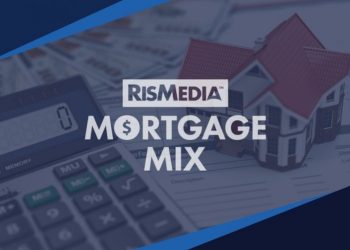 RISMEDIA, October 26, 2010—Existing-home sales rose again in September 2010, affirming that a sales recovery has begun, according to the National Association of Realtors. Existing-home sales, which are completed transactions that include single-family, townhomes, condominiums and co-ops, jumped 10.0% to a seasonally adjusted annual rate of 4.53 million in September from a downwardly revised 4.12 million in August, but remain 19.1% below the 5.60 million-unit pace in September 2009 when first-time buyers were ramping up in advance of the initial deadline for the tax credit last November.
RISMEDIA, October 26, 2010—Existing-home sales rose again in September 2010, affirming that a sales recovery has begun, according to the National Association of Realtors. Existing-home sales, which are completed transactions that include single-family, townhomes, condominiums and co-ops, jumped 10.0% to a seasonally adjusted annual rate of 4.53 million in September from a downwardly revised 4.12 million in August, but remain 19.1% below the 5.60 million-unit pace in September 2009 when first-time buyers were ramping up in advance of the initial deadline for the tax credit last November.
Lawrence Yun, NAR chief economist, said the housing market is in the early stages of recovery. “A housing recovery is taking place, but will be choppy at times depending on the duration and impact of a foreclosure moratorium. But the overall direction should be a gradual rising trend in home sales with buyers responding to historically low mortgage interest rates and very favorable affordability conditions,” he said.
According to Freddie Mac, the national average commitment rate for a 30-year, conventional, fixed-rate mortgage fell to a record low 4.35% in September from 4.43% in August; the rate was 5.06% in September 2009.
The national median existing-home price for all housing types was $171,700 in September, which is 2.4% below a year ago. Distressed homes accounted for 35% of sales in September compared with 34% in August; they were 29% in September 2009.
NAR President Vicki Cox Golder, owner of Vicki L. Cox & Associates in Tucson, Ariz., said opportunities abound in the current market. “A decade ago, mortgage rates were almost double what they are today, and they’re about one-and-a-half percentage points lower than the peak of the housing boom in 2005,” she said. “In addition, home prices are running about 22 percent less than five years ago when they were bid up by the biggest housing rush on record.”
To illustrate the jump in housing affordability, the median monthly mortgage payment for a recently purchased home is several hundred dollars less than it was five years ago. “In fact, the median monthly mortgage payment in many areas is less than people are paying for rent,” Golder said.
Housing affordability conditions today are 60 percentage points higher than during the housing boom, so it has become a very strong buyers’ market, especially for families with long-term plans. “The savings today’s buyers are receiving are not a one-time benefit. Buyers with fixed-rate mortgages will save money every year they are living in their home—this is truly an example of how homeownership builds wealth over the long term,” Golder added.
Total housing inventory at the end of September fell 1.9% to 4.04 million existing homes available for sale, which represents a 10.7-month supply at the current sales pace, down from a 12.0-month supply in August. Raw, unsold inventory is 11.7% below the record of 4.58 million in July 2008.
“Vacant homes and homes where mortgages have not been paid for an extended number of months need to be cleared from the market as quickly as possible, with a new set of buyers helping the recovery along a healthy path,” Yun said. “Inventory remains elevated and continues to favor buyers over sellers. A normal seasonal decline in inventory is expected through the upcoming months.”
A parallel NAR practitioner survey shows first-time buyers purchased 32% of homes in September, almost unchanged from 31% in August. Investors were at an 18% market share in September, down from 21% in August; the balance of purchases were by repeat buyers. All-cash sales were at 29% in September compared with 28% in August.
Single-family home sales increased 10.0% to a seasonally adjusted annual rate of 3.97 million in September from a pace of 3.61 million in August, but are 19.5% below the 4.93 million level in September 2009. The median existing single-family home price was $172,600 in September, down 1.9% from a year ago.
Existing condominium and co-op sales rose 9.8% to a seasonally adjusted annual rate of 560,000 in September from 510,000 in August, but are 16.2% lower than the 668,000-unit level one year ago. The median existing condo price was $165,400 in September, down 6.2% from September 2009.
Regionally, existing-home sales in the Northeast increased 10.1% to an annual pace of 760,000 in September but are 20.8% below September 2009. The median price in the Northeast was $239,200, which is 1.4% below a year ago.
Existing-home sales in the Midwest jumped 14.5% in September to a level of 950,000 but are 26.4% below a year ago. The median price in the Midwest was $139,700, down 5.2% from September 2009.
In the South, existing-home sales rose 10.6% to an annual pace of 1.77 million in September but are 14.9% lower than September 2009. The median price in the South was $149,500, down 2.6% from a year ago.
Existing-home sales in the West increased 5.0% to an annual level of 1.05 million in September but are 16.7% below a year ago. The median price in the West was $213,600, which is 4.9% lower than September 2009.
For more information, visit www.realtor.org.










